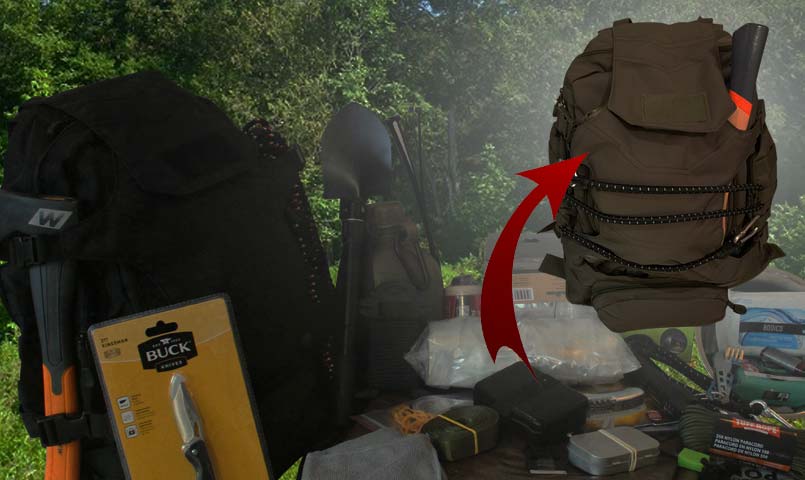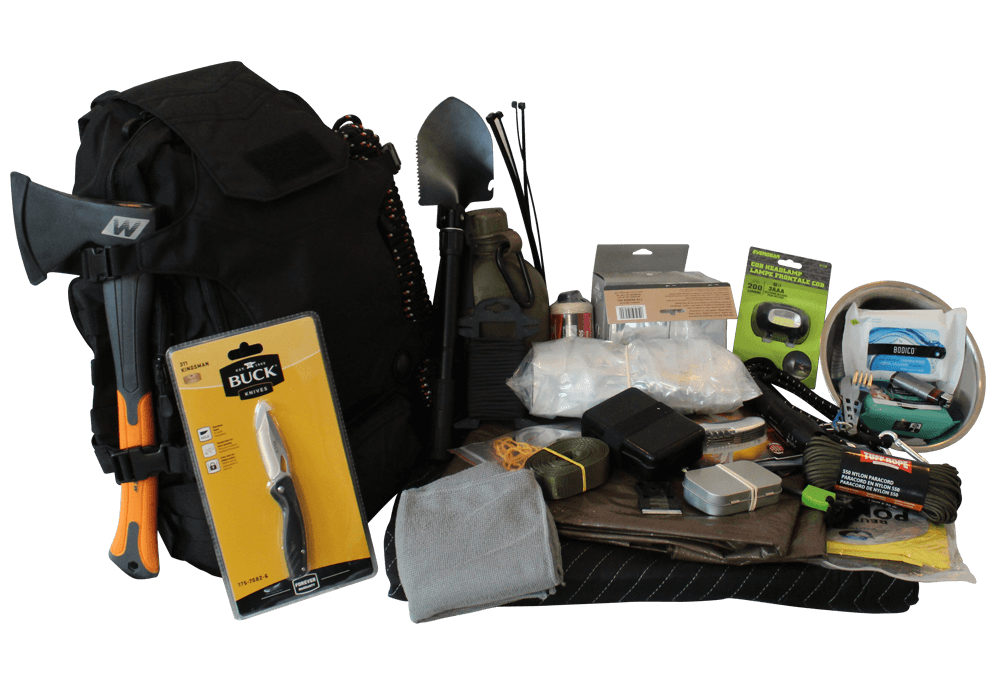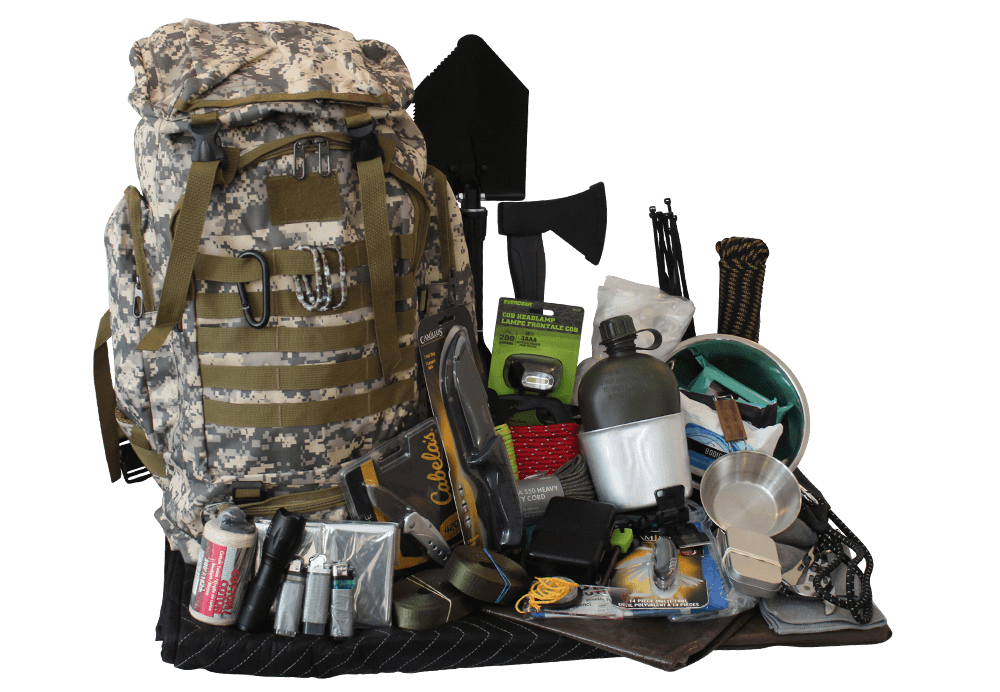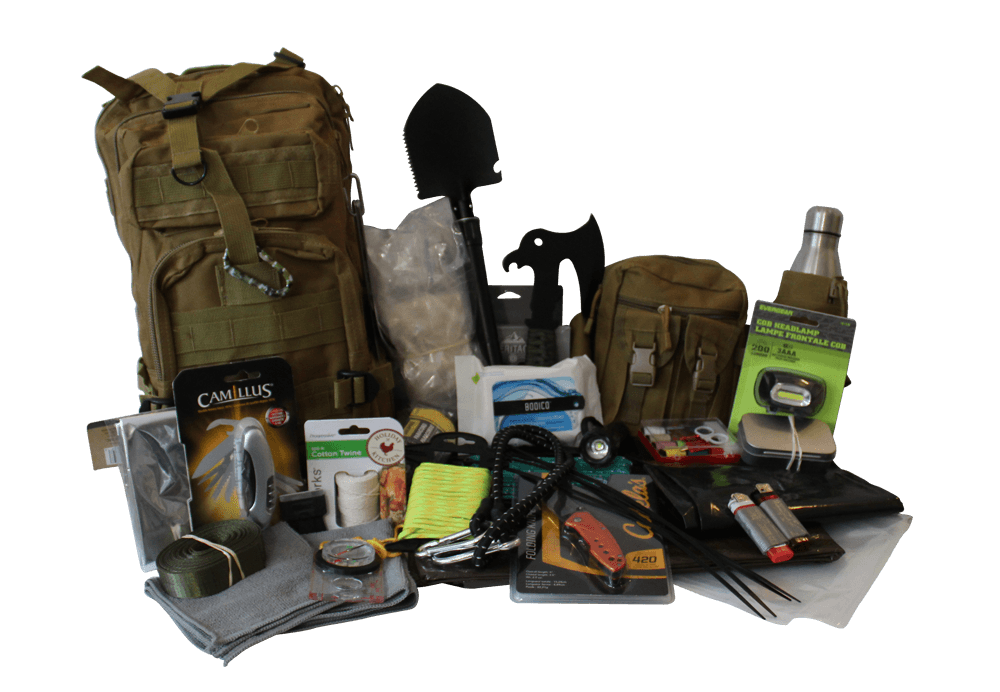When it comes to packing a bugout bag, maximizing space and weight is key. A bugout bag, also known as a 72-hour kit, a survival bag, or as SHTF (shit hits the fan) bag, is a pre-packaged collection of essential supplies and equipment that is designed to help you survive in the event of an emergency or natural disaster. In order to ensure that your bugout bag is effective, it is important to make the most of the limited space you have available, but also to keep your survival pack as light as possible in order to increase movement speed and agility.

Here are some tips that we have taken to heart, to maximize space and weight in our bugout bags:
- We choose multi-use items: when we pack your bugout bag, we try to choose items that serve multiple purposes. For example, a tarp can be used for shelter, as a ground cover, as rain gear, or to collect water. A knife or multi-tool can be used for cutting, opening containers, and starting a fire. By choosing multi-use items, we save space and weight in the bugout bag.
- Pack compact and lightweight items: when selecting items for your bugout bag, we found the most compact and lightweight options. For example, instead of a full-sized first-aid kit, we custom built a compact but fairly complete first-aid kit that contains only the essentials. By choosing compact and lightweight items, we have assembled the most efficient configuration of the space and weight in our bugout survival packs.
- Consider using a hydration system: a hydration system, such as a the canteen and water purification tablets included in our kits, can help you save space and weight in your bugout bag. Hydration systems allow you to carry water in a compact and lightweight manner, freeing up space in your bag for other essential items. Furthermore, our canteens are designed to attach to the outside of your pack or to your belt, allowing more items to be stored inside.
- Pack essential items first: when packing your bugout bag, start by packing essential items such as food, water, and first-aid supplies. Once you have packed these items, you can then add non-essential items such as clothing and personal items. By focusing on essential items first, you can ensure that your bugout bag is as lightweight as possible. Our bugout gear fits within the packs we offer, but it will be up to you to configure the items within.
- Consider the use of packing cubes: packing cubes can help you maximize space and weight in your bugout bag. Packing cubes allow you to organize your items and keep them separate, freeing up space in your bag and making it easier to find what you need. Some of the items in our kits come in their own containers, such as our fire kits, sewing kits, etc.
- Store items in small containers: instead of packing large containers of food or other supplies, store items in small, lightweight containers. This will help you save space and weight in your bugout bag, and it will also make it easier to access your supplies in an emergency. Our kits come with some supplies that can be used to pack your bugout backpack, and potentially re-used as you see fit, or as necessity requires.
- Keep your bugout bag organized: a well-organized bugout bag can help you save space and weight. By keeping your items neatly arranged and easily accessible, you can make the most of the limited space and weight you have available.
In conclusion, maximizing space and weight in your bugout bag is essential for ensuring that your bugout bag is effective, but also to minimize the physical strain of having to carry a heavy bag over potentially long distances. By following these tips, you can make the most of the limited space and weight you have available, and we can ensure that your bugout bag contains all of the essentials you need to survive in an emergency.







